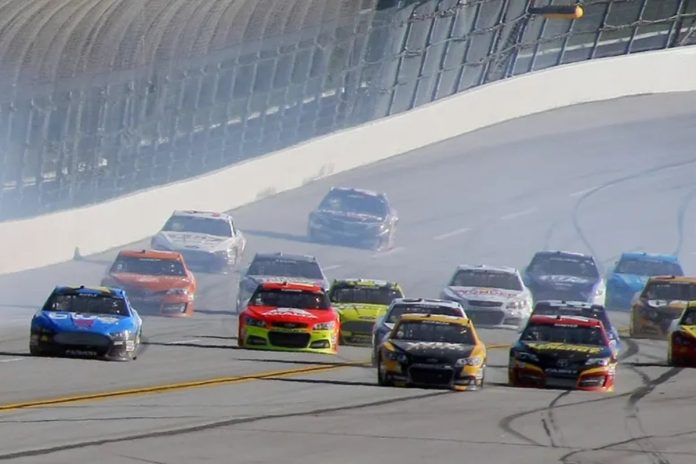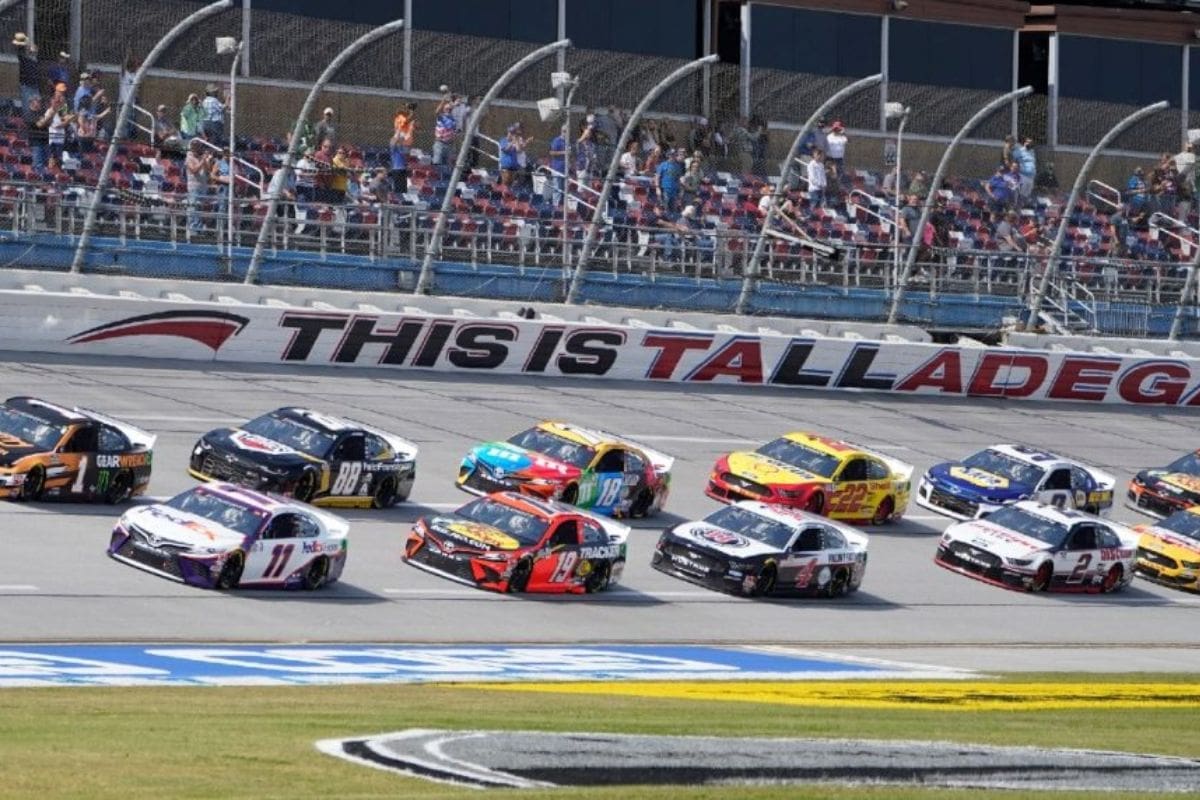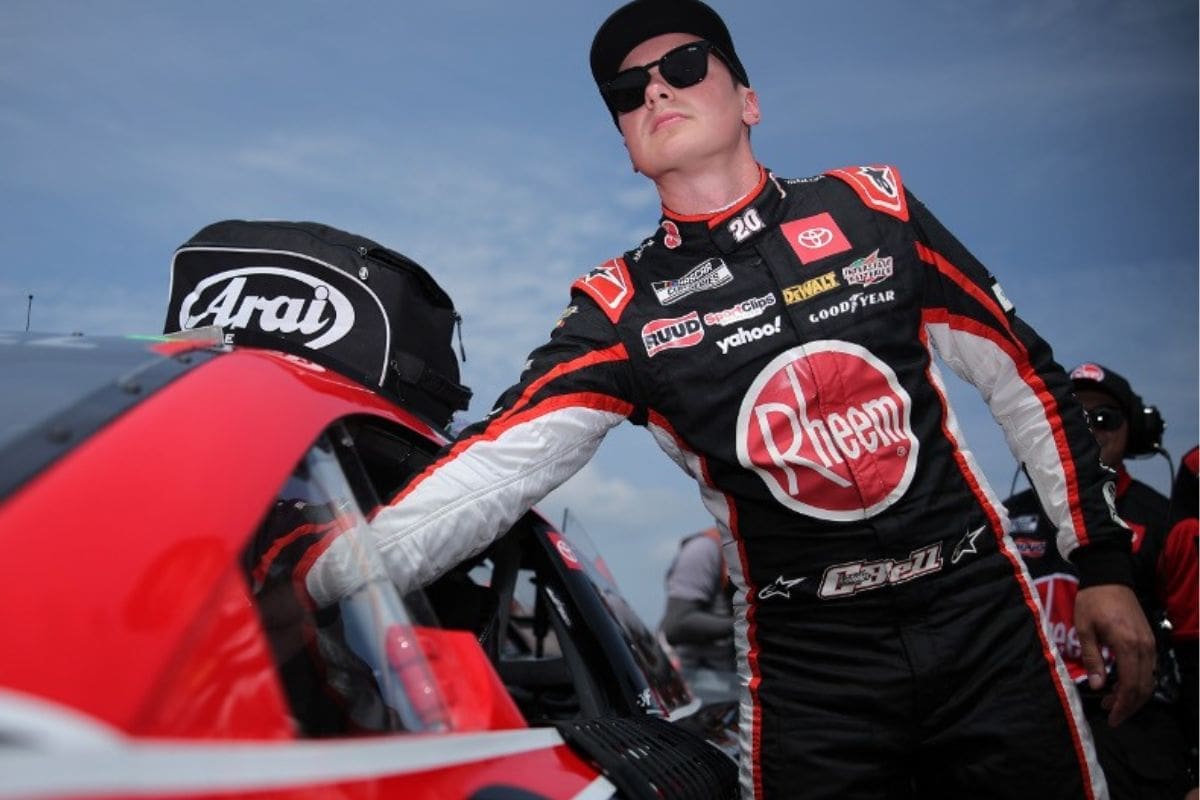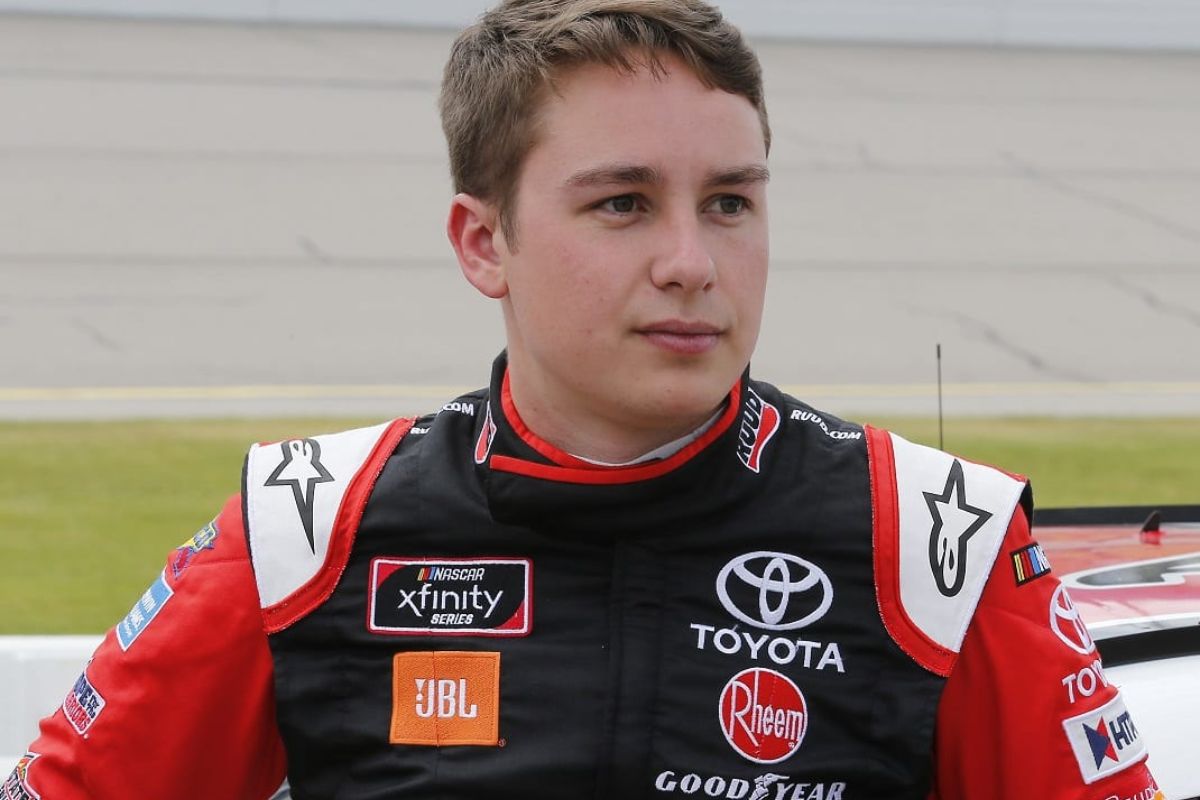FOX Misses Talladega Wreck: In NASCAR, the recent incident at Talladega Superspeedway has stirred considerable discussion among motorsport enthusiasts and media professionals alike. FOX’s failure to capture a significant moment—Christopher Bell’s admission of strategic despair following an unexpected wreck—raises questions about the balance between broadcasting strategies and the authentic delivery of sport events. This oversight not only sidelined an important race development but also Bell’s calculated efforts in fuel management, a vital aspect of racing tactics.
Key Takeaways
- FOX missed broadcasting a critical wreck at Talladega during a commercial, leaving viewers uninformed.
- The wreck occurred late in Stage 2, involving Christopher Bell and his teammates.
- Bell expressed disappointment as the wreck nullified his strategic fuel conservation efforts.
- Fans and racers criticized FOX for not capturing significant live race moments due to commercial breaks.
- There is a growing call among viewers and stakeholders for broadcasters to adjust commercial timings during crucial race events.
Commercial Breaks Cause Fan Frustration
FOX’s decision to air commercials during a critical moment in the GEICO 500 not only marks a significant race incident but also sparked considerable frustration among NASCAR fans. The incident, involving a key crash that marked the initial caution of the race outside of stage breaks, was significantly missed by viewers due to the timing of the commercial break. This oversight deprived fans of real-time insights and analysis during an important turning point at Talladega Superspeedway.
The gravity of missing such a moment cannot be understated. Racing, especially at a track as unpredictable as Talladega, hinges on continuous and detailed coverage to fully convey the drama and strategy unfolding. When broadcasts deviate from live action, especially unexpectedly, it disrupts the narrative flow and diminishes the viewer’s experience. This incident not only interrupted the spectacle but also potentially compromised viewer understanding of critical race dynamics and driver decisions leading up to and following the crash.
“Something I’ve never seen suggested, why can’t they do commercials the entire time under yellow, come back with 1 to go, give us the update on pit stops and go green. Why do we need to come back from commercials just to watch 9 second stops and then go back to commercial.”
“For all complaining about commercials. Sponsors pay lots of money for their ads. If they don’t purchase advertising, then NO TV coverage at all. Be glad our sport still has people spending money on advertising. They always show the cause of caution when they come back….”- Fans reaction
Justin Haley said, "I can't race it" with the way how the tow is bent. #NASCAR
— Jonathan Fjeld (@Jonathan_Fjeld) April 21, 2024
Fans Backlash Over FOX’s Commercial Strategy
The backlash from NASCAR fans regarding FOX’s commercial strategy highlights a growing concern over the network’s handling of live sports broadcasts. This unease stems from recent incidents where critical moments of races were missed due to lengthy commercial interruptions. These incidents, including the failure to broadcast a crucial wreck at Talladega tri-oval track, have stirred significant discontent among the NASCAR community. Fans argue that the essence of live sports—uninterrupted, real-time coverage—is being compromised for commercial gain.
A deeper analysis reveals that this strategy might not only alienate dedicated viewers but could also diminish FOX’s reputation as a premier sports broadcaster. The frequent and poorly timed ad breaks disrupt the narrative flow of the race, leaving fans out of touch with real-time developments on the track. This interruption could potentially lead to a decrease in viewer engagement and loyalty, factors critical to the network’s long-term success in sports broadcasting.
Moreover, the direct communication from racers like Christopher Bell and Justin Haley during the race, expressing their frustrations, resonates deeply with fans, who feel a shared sense of disappointment.
“I can’t race it” with the way how the tow is bent.” -Justin Haley
Debate Over Commercial Breaks Rages On
As the discussion over commercial breaks in NASCAR broadcasts intensifies, different stakeholders voice their opinions, revealing a complex interplay between commercial necessities and viewer preferences. The debate is not just a matter of interrupting the live action; it’s also about the timing and quality of these interruptions. One viewer’s suggestion highlights a approach to this issue: limiting commercials to caution periods with a quick return to live action before the race resumes. This not only guarantees viewers don’t miss critical moments but also respects the flow of the event.
Conversely, there are compelling economic considerations to account for. Advertisers fund a significant portion of the broadcast, making their interests crucial in the operational model of sports broadcasting. The argument that without these financial contributions there would be no broadcast at all emphasizes the delicate balance between satisfying the viewer’s desire for uninterrupted coverage and fulfilling the financial models that make these broadcasts feasible.
Disappointment Over Wreck and TV Coverage
This incident, occurring during a full-screen commercial break with only five laps remaining in Stage 2, highlights a significant tension between broadcasting commercial obligations and delivering a live, uninterrupted sporting experience. The timing was particularly unfortunate as it coincided with a significant on-track event—a wreck involving prominent driver Christopher Bell after a bump from Chase Elliott—thus leaving fans shock and out of sync with the race’s crucial moments.
Such disruptions are not just moments of frustration but are crucial in shaping the viewer’s experience and perception of NASCAR as a spectator sport. The balance between commercial necessity and sports broadcasting integrity remains a delicate dance. Fans’ growing vocal discontent suggests a tipping point, urging broadcasters to reconsider their strategy during key race moments.
You know, NASCAR and TV partners pump this all week. Tune in! Watch the race! And then they don't show a key part of the race like this. I'll shut up now, but it's absolutely detrimental to building a fan base and you'll never convince me otherwise. https://t.co/dAHECyux45
— Jeff Gluck (@jeff_gluck) April 21, 2024
Bell’s Disappointment and Fuel Management Strategy
Despite careful fuel management throughout the race, Christopher Bell’s strategy ended in disappointment due to unforeseen incidents on the track. The strategic precision that Bell and his team employed throughout the race at Talladega was aimed at maximizing fuel usage to create a competitive edge during the crucial stages of the race. This approach is a confirmation of the rigorous demands of NASCAR racing where fuel mileage can be as vital as speed.
Bell’s strategy revolved around conserving fuel until the final stages where the race dynamics typically shift with the green flag pit stops. This technique is not merely about saving fuel but understanding the race’s rhythm and anticipating competitors’ moves. Bell’s disappointment was visible as he acknowledged the wreck’s impact on his race outcome.
“I don’t know how straightened the tires were, but there was a lot of damage, so I don’t think anything was gonna come out of it.”
“I mean that’s just the name of the game now. You got to save as much as you can, until the green flag stop. And then the race happens after the green flag stop…’-Bell
News in Brief: FOX Misses Talladega Wreck
The incident at Talladega highlights the intricate interplay between strategic planning and unpredictability inherent in motorsport events. Christopher Bell’s experience, plagued by a critical wreck and insufficient media coverage due to commercial breaks, brings to light broader issues concerning viewer engagement and broadcast strategies in sports telecasts. This scenario serves as a reminder of the challenges faced by broadcasters in balancing commercial interests with the duty to provide thorough, real-time coverage of live sporting events.
Our Reader’s Queries
Q. Why is Talladega famous?
A. Talladega, NASCAR’s peak of speed, looms large as the sport’s grandest and fastest circuit, per NBC Sports. Anticipating its debut in 1969, the architects behind its creation envisioned a spectacle fueled by velocity, promising race fans an unparalleled experience of unadulterated speed.
Q. Who won Talladega April 25, 2010?
A. Kevin Harvick dominated the Richmond NASCAR Xfinity Series event, leading an impressive 202 out of 250 laps to secure his seventh victory at the track, setting a new record. Fast forward to April 25, 2010, where Harvick showcased his skills yet again, navigating past Jamie McMurray in a nail-biting finish at Talladega Superspeedway’s Aaron’s 499 NASCAR Cup Series race, clinching the checkered flag by a mere margin.
ALSO READ: Talladega Superspeedway New Logo: A Bold Tribute to Racing Legacy





